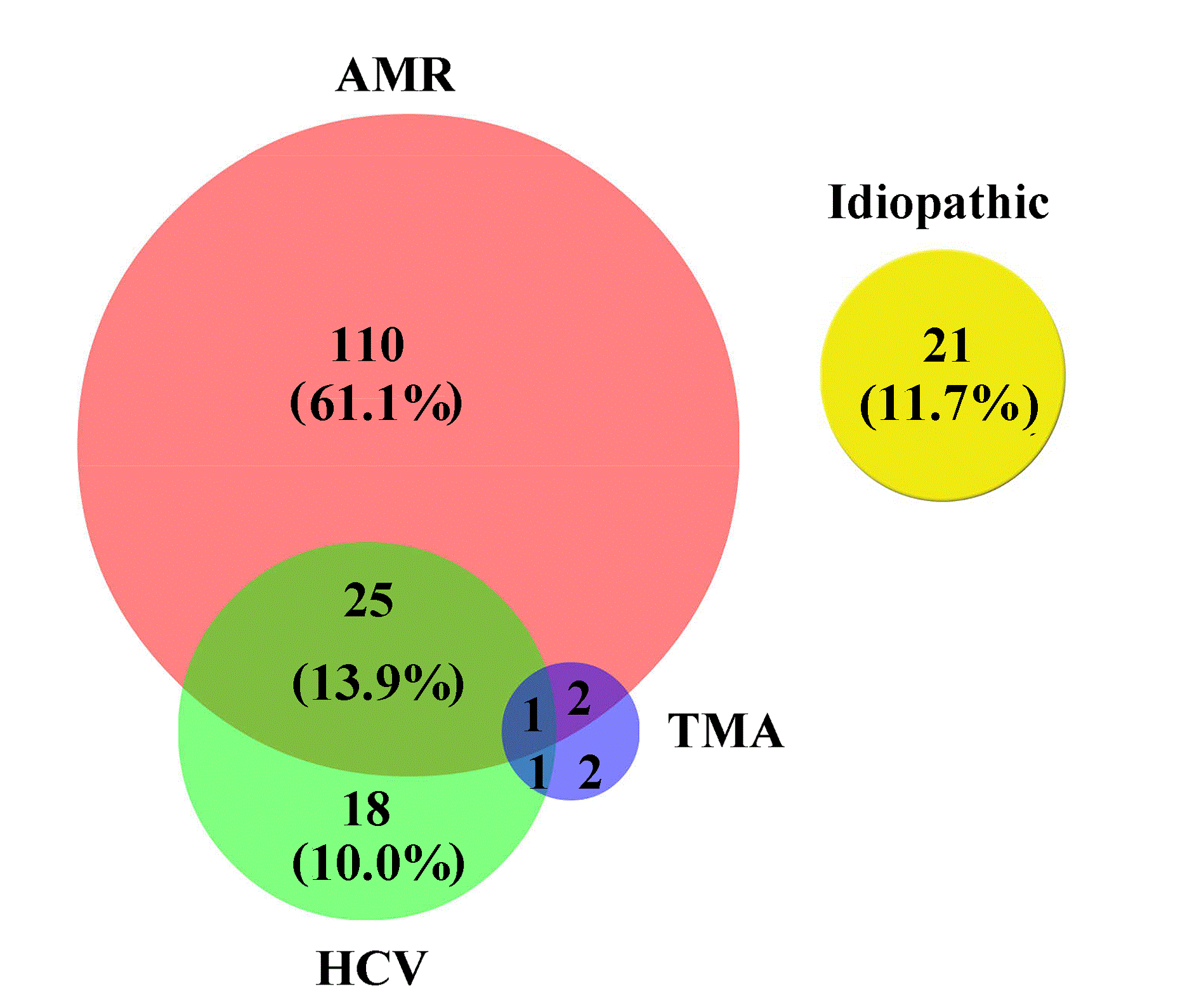Significance of Histopathologic Features for Predicting Progression in Patients with Transplant Glomerulopathy
National Clinical Research Center of Kidney Diseases, Nanjing, China
Meeting: 2019 American Transplant Congress
Abstract number: A191
Keywords: Antibodies, Kidney transplantation, Proteinuria, Risk factors
Session Information
Session Name: Poster Session A: Kidney Chronic Antibody Mediated Rejection
Session Type: Poster Session
Date: Saturday, June 1, 2019
Session Time: 5:30pm-7:30pm
 Presentation Time: 5:30pm-7:30pm
Presentation Time: 5:30pm-7:30pm
Location: Hall C & D
*Purpose: Transplant glomerulopathy (TG) represents a major cause of long-term allograft failure and is the leading cause of overall post-transplant proteinuria. We aimed to determine the extent to which histopathologic features predicts prognostication.
*Methods: A single-center retrospective cohort with biopsy-proven TG were investigated. Renal biopsies were scored according to Banff 2015. The primary outcome was death-censored graft failure defined as return to dialysis or estimated glomerular filtration rate decreased to <15min/min/1.73m2. The prognostic significance of clinical and histopathologic parameters were determined using Cox proportional hazards models.
*Results: Data from 180 cases were available for analysis with a median follow-up of 5 years. The presumed underlying etiologies for TG was presented in Figure 1. Antibody-mediated rejection was considered to be the underlying etiology for TG in 110 (61.1%) cases, all of which met the arbitrary criteria that g+ptc≥2 and either C4d+ or DSA+ (defined as mean fluorescent intensity of the highest rank donor-specific bead>1000). In multivariable models, ci+ct score (hazard ratio [HR] 3.1; 95% confidence interval [CI] 2.0 to 4.9), cg score (HR 1.7; 95% CI 1.1 to 2.8), eGFR (HR 2.1; 95% CI 1.4 to 3.2) and proteinuria (HR 2.4; 95% CI 1.6 to 3.7) were independent predictors of the primary outcome. Mesangial IgA deposition did not significantly affect allograft survival. The only significant pathologic factors for the severity of proteinuria were cg and g+ptc (r2 =0.456) as determined by multivariable stepwise linear regression analysis.
*Conclusions: Severe ci+ct and cg at biopsy were predictors of unfavorable allograft prognosis in TG patients even after taking into consideration clinical characteristics. Furthermore, coexisting mesangial IgA deposition did not seem to worsen allograft survival. Histologic severity of cg and g+ptc were significantly associated with clinical proteinuria.
To cite this abstract in AMA style:
Li X, Chen J, Cheng D, Wang R, Wang W, Zhang M, Xu F, Wen J, Tang Z. Significance of Histopathologic Features for Predicting Progression in Patients with Transplant Glomerulopathy [abstract]. Am J Transplant. 2019; 19 (suppl 3). https://atcmeetingabstracts.com/abstract/significance-of-histopathologic-features-for-predicting-progression-in-patients-with-transplant-glomerulopathy/. Accessed December 13, 2025.« Back to 2019 American Transplant Congress

